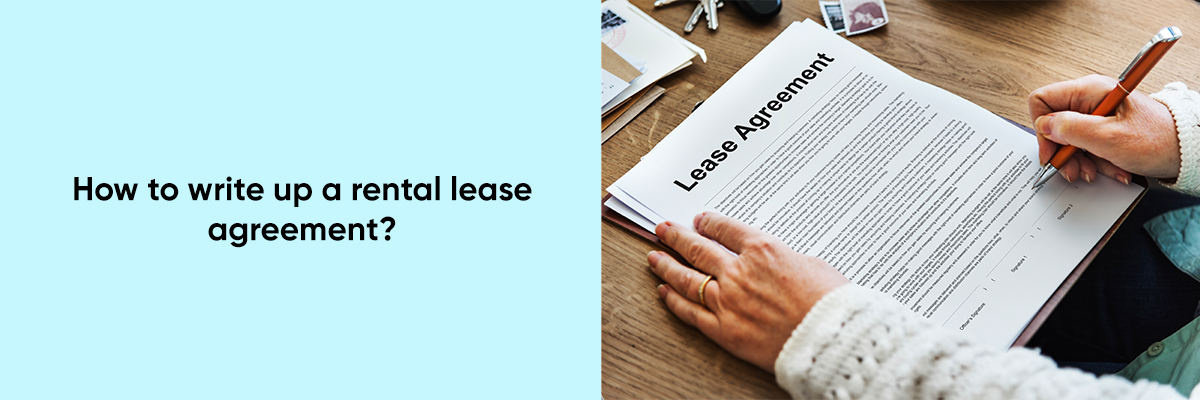A rental lease agreement is one of the most crucial documents for both landlords and tenants. It serves as the foundation of the rental relationship, outlining the rights, responsibilities, and expectations of both parties. For landlords, it ensures legal protection, helps maintain smooth operations, and minimizes the risk of disputes. For tenants, it guarantees their right to live in the property under fair terms.
Creating a comprehensive and well-drafted rental lease agreement is key to ensuring everything runs smoothly. In this blog, we’ll guide you step-by-step on how to write a rental lease agreement and explain what to do after it’s been created. We’ll also provide important tips to remember, common mistakes to avoid, and the essential elements of a perfect lease agreement.
If you want to learn more about fair housing and related topics, visit our webinar page, where you’ll find numerous helpful and informative webinars led by industry experts. These webinars will enhance your knowledge and skills as a property manager or landlord, helping you understand your rights and responsibilities towards tenants and equipping you to make informed decisions.
Explore our fair housing webinar page to deepen your understanding of important topics like HUD, HOTMA, and the rights and responsibilities of tenants and landlords. Join us for informative sessions designed to enhance your knowledge.



How to Write a Rental Lease Agreement
1. Start with Basic Information
Your lease agreement should clearly state the basic details of the rental property and the parties involved. Include:
- Full Names of Tenant and Landlord: Ensure you use the legal names of all individuals.
- Property Address: Clearly define the rental property’s address, including unit number if applicable.
- Lease Term: Specify whether the lease is for a fixed term (e.g., 12 months) or month-to-month.
2. Define Rent Terms
The rent section of the lease should be clear and easy to understand:
- Rent Amount: State the exact rent amount to be paid by the tenant.
- Due Date: Clearly specify when the rent is due (e.g., the 1st of each month).
- Payment Methods: List acceptable payment methods (bank transfer, check, etc.).
- Late Fees: Include penalties for late payments, such as a percentage or fixed fee after a certain grace period.
- Failed Rent Payments: Outline the process for handling failed rent payments, including any potential actions that may be taken, such as eviction procedures or reporting to credit agencies.
3. Security Deposit Terms
Every rental lease agreement must clearly explain security deposit terms:
- Amount: Mention the exact deposit amount collected at the start of the tenancy.
- Conditions for Withholding: Define what could lead to deductions from the deposit (e.g., property damage, unpaid rent).
- Return Timeline: Indicate the time frame for returning the deposit after the tenant moves out, in accordance with local laws.
4. Outline Responsibilities of Both Parties
A good lease agreement clearly distinguishes the responsibilities of both the landlord and tenant:
- Landlord’s Responsibilities: List maintenance obligations such as fixing structural issues, plumbing, and ensuring safety measures are in place.
- Tenant’s Responsibilities: Include tenant duties such as maintaining cleanliness, minor repairs (e.g., changing light bulbs), and reporting problems promptly.
5. Detail Property Rules
Specify any rules about the use of the property:
- Occupancy Limits: State how many people can live in the property.
- Pet Policies: Mention whether pets are allowed, and if so, specify any restrictions (size, breed, additional fees).
- Smoking Policies: Clearly define whether smoking is allowed inside the property.
- Subletting/Assignment: Indicate whether tenants are allowed to sublet the property or assign the lease to others.
6. Include Maintenance and Repair Clauses
Clearly outline who is responsible for various maintenance tasks:
- Routine Maintenance: Define who handles routine maintenance, such as lawn care or snow removal.
- Major Repairs: Indicate which types of repairs are the landlord’s responsibility and how quickly they will be addressed.
7. Describe Termination Conditions
Your lease agreement should explain how and when the lease can be terminated:
- Early Termination: Specify the consequences for breaking the lease early (penalties, forfeiture of deposit, etc.).
- Notice Period: Detail the amount of notice required for either party to terminate the lease (e.g., 30 or 60 days for tenants to vacate).
8. Include a Dispute Resolution Clause
To avoid lengthy legal battles, include a section on how disputes will be handled:
- Mediation or Arbitration: Indicate whether disputes will be resolved through mediation, arbitration, or by going to court.
9. Obey Local Laws and Regulations
Ensure that your lease agreement complies with local and state laws, as well as regulations created by HUD, NSPIRE, etc.
- Tenant Rights: Make sure you include all necessary clauses to comply with tenant protection laws (e.g., privacy rights, habitability, etc.).
- Fair Housing Laws: Avoid discriminatory language or terms that could violate fair housing regulations.
10. Get Signatures and Date
At the end of the lease, both the landlord and tenant must sign and date the agreement. This makes it a legally binding document:
- Signature Lines: Provide spaces for both parties to sign and date the agreement.
- Witness/Notary: Some agreements may require a witness or notary, depending on local laws.
Tips Related To Rental Lease Agreements
- Review the Lease Agreement with the Tenant: Go over the lease with your tenant before signing, and explain any unclear terms.
- Provide Copies to Both Parties: Ensure both the landlord and tenant have signed copies of the agreement for their records.
- Keep It Secure: Store the signed lease agreement in a safe place, as it serves as a legal document.
Points to Remember and Mistakes to Avoid
- Be Clear and Specific: Avoid vague language that could be interpreted in multiple ways. Clearly outline responsibilities, rules, and expectations.
- Don’t Ignore Local Laws: Make sure your agreement complies with local rental laws and regulations. Ignoring legal obligations can lead to costly disputes.
- Avoid Discriminatory Language: Ensure your lease agreement complies with fair housing laws by avoiding language that could be seen as discriminatory.
- Refrain from Overcomplicating: While it’s important to be thorough, avoid making your lease agreement overly complex. Keep it clear, concise, and easy to understand.
Conclusion
A well-written rental lease agreement is essential for ensuring a smooth and hassle-free relationship between landlords and tenants. By including all the necessary elements—such as rent terms, responsibilities, property rules, and termination conditions—you can prevent misunderstandings and protect both parties legally.
After creating the lease, make sure to review it with your tenant and follow the steps necessary to secure it as a legally binding document. By staying compliant with local laws and avoiding common mistakes, you can create a clear, effective lease agreement that benefits both you and your tenant.
Creating a comprehensive lease agreement from the start ensures a healthy, professional relationship and helps avoid potential disputes down the line.


